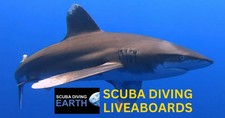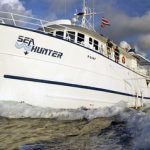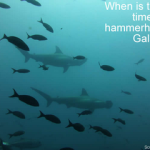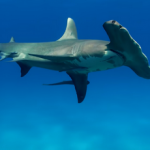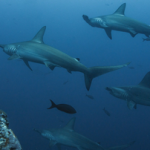
Costa Rica Liveaboard Diving
Remote Liveaboard Diving With 100’s of Schooling Scalloped Hammerheads
Popular Costa Rica liveaboards
| MV Sea Hunter; Liveaboard diving in Costa Rica; 9.2 out of 10 and is rated 'Superb'; from £422, $515, €481/day. Customer Review: ”A must-do expedition for experienced divers. Fantastic, the crew really go out of their way to make their guests feel special and appreciated. It is extremely expensive, but considering how remote the location is and how comfortable the boat is, it’s understandable. Only recommended for hard-core experienced divers as the crossing to Cocos is long and bumpy. I loved every minute of it and was especially surprised how beautiful the cabins are (hand-painted individually). The general comfort level was a lot higher than I had expected and if I could afford it I’d definitely go back again.” Recommended for: Diving, cabins, crew. |
| MV Okeanos Aggressor II; Liveaboard diving in Costa Rica; 8.7 out of 10 and is rated 'Fabulous'; from £341, $416, €389/day. Customer Review: ”Cocos island in luxury. The chef was brilliant as were the crew who did everything to make the guests feel welcome. The visibility was a bit poor but we still got to see many sharks and Manta Rays. The only thing that spoilt it was that I was not told that a pcr test was required before being allowed to board which cost me a lot of money last minute. Recommended for: The crew were exceptional, the food magnificent and the Whaleshark on the last dive. |
| MV Cocos Island Aggressor; Liveaboard diving in Costa Rica; 0 out of 10 and is not rated; from £366, $447, €417/day. Customer Review: |
TO SEE ALL COSTA RICA LIVEABOARDS SCROLL TO THE TABLE BELOW
Liveaboard Diving in Costa Rica
Costa Rica liveaboard diving is about the remote and isolated Cocos Islands where the nutrient-rich waters mean that divers enjoy schooling hammerheads and other sharks, Pacific mantas, turtles and even whales. Cocos Islands are only accessible by liveaboard as they are 550km (344m) from Costa Rica.
The waters around Costa Rica are fantastic for scuba diving. Whilst there is good diving by day boat in Costa Rica, Costa Rica liveaboard diving is centred around Cocos Island and Cano Island. Although Cano Island is reachable by day boat, Cocos Island is not. Cocos Island is a UNESCO National Park, which is the only eastern Pacific tropical rainforest island.
If you love scuba diving with sharks, Cocos Island will be right up your street, as Cocos Island is known for schooling hammerheads, alongside an abundance of other sharks and marine life.
Enjoy good visibility of around 20-25 metres (66-82 feet) together with sea temperatures of 28°C (82.4°F).
Cocos Island is in the Pacific and located 550 kilometres (344 miles) from the mainland of Costa Rica. This means the only way to enjoy the diving at Cocos Island is by Costa Rica liveaboard.
The crossing to Cocos Island can take nearly 2 days, and the travel time is weather dependent. But the trip is worth the crossing time, as you’ll be rewarded with an abundance of marine life that’s matched almost nowhere else on the planet.
Due to the remoteness of Cocos Island from the mainland of Costa Rica, many liveaboards require divers to have Advanced Open Water certification with a minimum of 30-50 logged dives.
Marine Life and Sharks at Cocos Island
The sharks seen at Cocos Island include hundreds of schooling scalloped hammerhead sharks, silvertip sharks, silky sharks, Galapagos sharks, blacktip sharks, tiger sharks, whitetip reef sharks, nurse sharks and whale sharks.
Other marine life includes three species of turtle, over 30 types of coral and 250 species of fish. These fish species include yellowfin tuna, sailfish, giant manta rays, spotted eagle rays, stingrays, large shoals of bigeye trevally and blue stripped snapper, humpback whales, bottlenose dolphins and sea lions.
Table of Costa Rica Liveaboards
This list of Costa Rica liveaboards is in descending customer rating order, so the liveaboards with the highest customer rating will be at the top of the list. To filter this table for the features that are important for your Costa Rica liveaboard trip, select from the list of filters below.
| Discover Liveaboard | Customer Reviews | Price Per Day | |
|---|---|---|---|
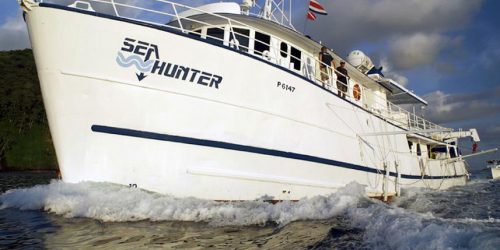 | Review: MV Sea Hunter; Book: MV Sea Hunter | 9.2 Superb | from £422; $515; €481 |
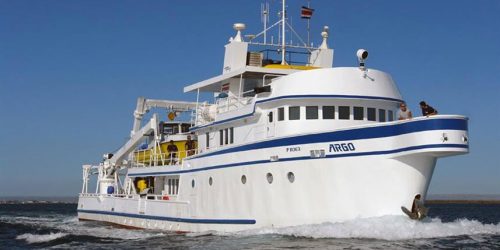 | Review: MV Argo; Book: MV Argo | 8.9 Fabulous | from £461; $562; €526 |
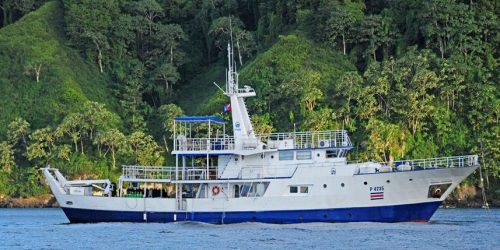 | Review: MV Okeanos Aggressor I; Book: MV Okeanos Aggressor I | 8.8 Fabulous | from £340; $415; €388 |
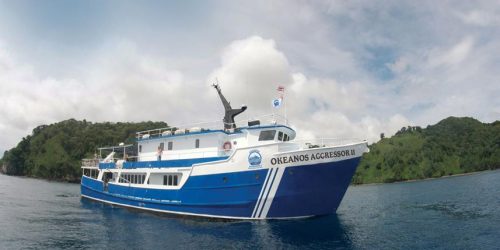 | Review: MV Okeanos Aggressor II; Book: MV Okeanos Aggressor II | 8.7 Fabulous | from £341; $416; €389 |
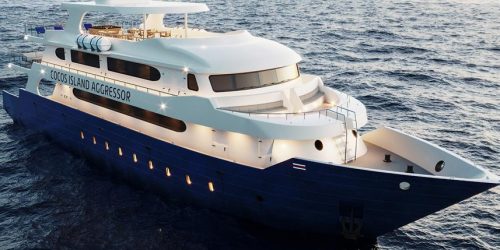 | Review: MV Cocos Island Aggressor; Book: MV Cocos Island Aggressor | 0 Not rated | from £366; $447; €417 |
Note: The above “Price Per Day” was correct at the time of producing this article, as was the exchange rate used to convert the GBP cost to US Dollars and Euros. For an up-to-date cost for your chosen liveaboard, please visit the “Book” link above.
Best Time To Dive Costa Rica
Scuba diving Costa Rica is possible year-round. As Costa Rica lies near the equator the climate is fairly constant. Costa Rica has two main seasons; the dry season, which is from December to May, and the rainy season (known as the green season), which is from June to November/December.
The best time to dive Cocos Island is in the rainy season from June through November. During the rainy season the nutrient upswells attract manta rays and whale sharks. But surface conditions are rougher at this time of year, so those who might suffer seasickness on a liveaboard, may want to avoid this time or take extra seasickness precautions.
The visibility is lower in the rainy season and drops to 10-25 metres (33-82 feet).
How To Get To Costa Rica Liveaboards
The capital of Costa Rica is San Jose, which has an international airport. There are many international flights that fly to San Jose international airport (Juan Santamaria International Airport SJO), with many transiting via the United States.
Some of the liveaboard operators arrange a transfer from the airport, whereas some begin the trip in San Jose, and will transport you to the departure port and liveaboard boat. Most liveaboards bound for Cocos Island depart from Puntarenas port, which is roughly 90 minutes from San Jose.
Cano Island Diving
Caño Island includes spectacular dive sites with some of the best scuba diving in the world. The Caño Island Biological Reserve has vibrant coral and stunning marine life. Scuba divers will enjoy diving with sharks such as whitetip reef sharks, bull sharks, tiger sharks and if you are lucky, whale sharks too.
The marine life found at Caño Island also includes giant manta rays, sea turtles, dolphins, moral eels, stingrays, whales, silverjack, needlefish, parrotfish, yellowfin tuna, lobsters, parrotfish, snapper, triggerfish and angel fish.
Some Costa Rica liveaboards visit Caño Island, but you can also use day-boats to dive there. It takes around an hour to reach the island by boat from Drake Bay. The water visibility is usually not affected by seasonal rains with an average of 15-20 metres (50-66 feet) visibility.
I hope you enjoyed this page about Costa Rica liveaboard diving
I’d love to hear from you. Tell us about your adventures of diving and snorkeling, in the comments below. Please also share your photos. Either from your underwater cameras or videos from your waterproof Gopro’s!
If this article hasn’t answered all of your questions. If you have more questions either about snorkeling or scuba diving (or specifically about Costa Rica liveaboard diving), please comment below with your questions.
There will also be many more articles about scuba diving (and snorkeling) for you to read and learn about these fabulous sports.
Have fun and be safe!
Select Another Liveaboard Location
| All Liveaboard Locations |
| Discreet Liveaboard Locations |
